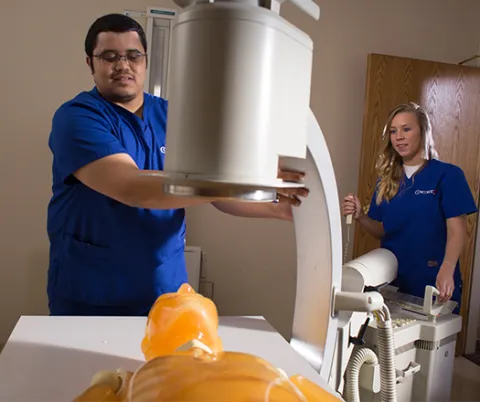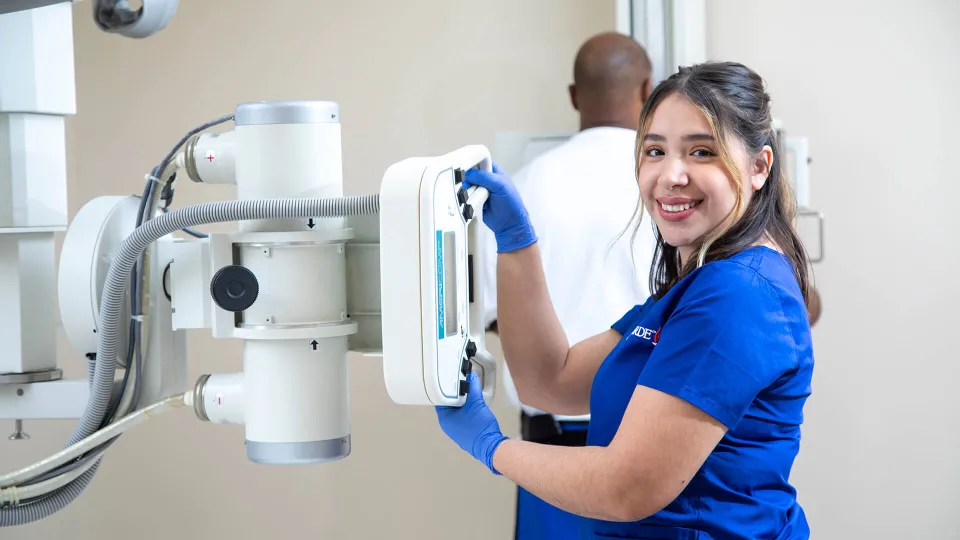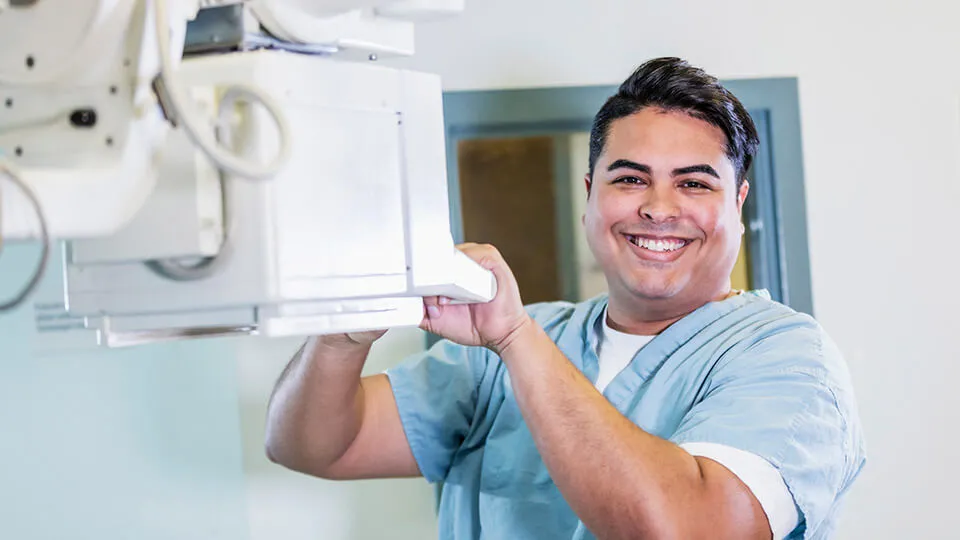Concorde Staff

Have you ever gone in for an x-ray? The person guiding you through the process and taking the images is a radiologic technologist, also known as a radiology tech!
Radiologic techs perform imaging tests for physicians, and these tests are often used to obtain or confirm a diagnosis. While over half of these professionals work in hospitals, jobs are also available in physician group practices, surgical centers, and diagnostic clinics.
Being a radiographer requires a variety of skills, including technology proficiency, stamina, physical strength, discipline, and excellent communication skills.
If you are considering pursuing an education as a radiologic technologist at Concorde, it is important to be familiar with the responsibilities of a radiologic technologist.
Although job descriptions may vary depending on specific specialties, here is a look at some of the common responsibilities radiologic technologists engage in each day.
PERFORMANCE OF IMAGING TESTS
The main part of a radiologic technologist's job is to perform ordered imaging tests. This often involves positioning patients, operating imaging equipment, and entering computer commands.
Patients must also be monitored closely during the tests. Once the test is complete, images must be reviewed to ensure they offer the quality needed for the physician to make the diagnosis.
PATIENT INTERACTION
This career is not all about imaging - it also requires a significant amount of patient interaction. Good oral communication skills are essential for radiographers. Radiologic technologists are required to take a medical history of patients before performing procedures.
They also need to explain the specific procedure, answering patient questions along the way. Additionally, technologists now discuss the results of the tests with patients.
EQUIPMENT AND FILE MAINTENANCE
Both equipment maintenance and file maintenance are part of the job description for radiographers. Some types of imaging equipment require routine maintenance. Techs must also do regular checks to ensure that machines are working properly.
Adjustments to the machine's controls may need to be made from time to time. File maintenance is also important, particularly since patient information is confidential. Techs must make sure that images and files are kept secure, ensuring that access is restricted.
EMPLOYMENT PROJECTIONS
Now that you are aware of what radiologic technologists do, you may be wondering about the job and outlook for this career. According to the Bureau of Labor Statistics, within the next 10 years, the field is expected to see a 9% increase in job growth, which is must faster than average.
As the Baby Boomer generation grows older, an increase in medical conditions requiring imaging will fuel the increase in jobs within this field.
Radiologic technologists require at least an associate degree, although bachelor's degree programs are also available. During a qualified program, students will learn the necessary skills needed to perform essential duties. After graduation, many students choose to take the national certification exam and acquire a state-specific license.

Take The Next Step Towards a Brighter Future
Interested in learning more about our Radiologic Technology program? We have a Concorde representative ready to talk about what matters most to you. Get answers about start dates, curriculum, financial aid, scholarships and more!






